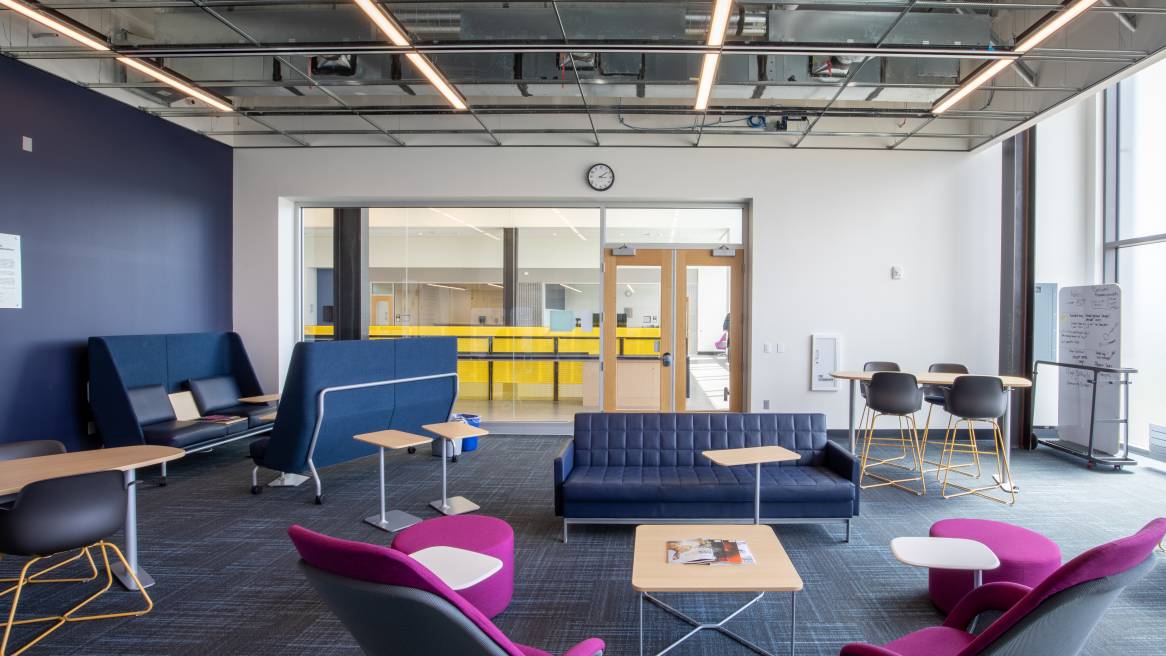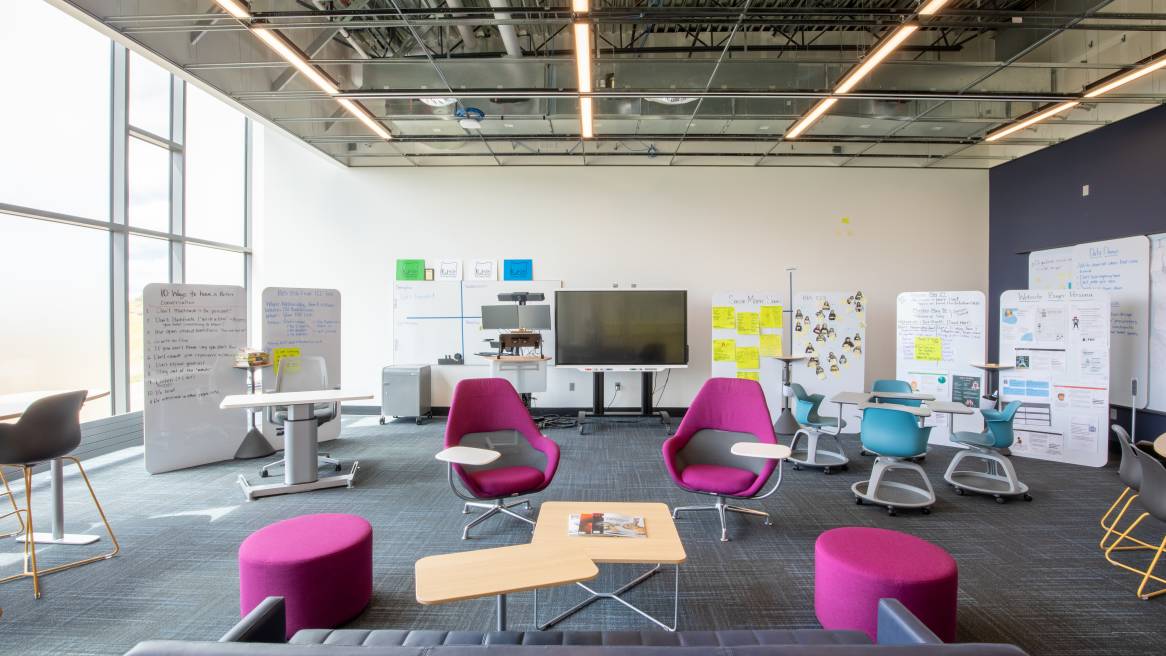Active Learning Classrooms Meet Demand for Engagement
New research shows active learning spaces have a positive impact on learning success, creativity, innovation and engagement.
The pandemic accelerated the importance of engaging students in what and how they learn. As a result, more educators are embracing active learning — seeking to create experiences that engage students through discussions, problem solving, group projects and other methods. And new research shows active learning spaces have a positive impact on learning success, creativity, innovation and engagement.
91% of Oregon Institute of Technology students say an active learning space helps them be more creative compared to 33% in a traditional classroom.
“Because of the pandemic, students know what works for them and what doesn’t,” says Sharon Beaudry, J.D., Oregon Institute of Technology, professor of management and active learning researcher. “Students are very self-aware now. They have experienced the good, the bad and the ugly. They understand the best choice for them and can advocate for themselves. We need to be responsive to that.”
Beaudry says more educators today are starting their careers at Oregon Institute of Technology with a background in active learning pedagogy. She previously served as a Steelcase Learning Fellow and has spent years studying how physical environments influence teaching and learning.
Active Learning Classrooms
Active learning classrooms are designed to amplify the effects of active learning and facilitate its use. These spaces encourage the flow of people, conversations, ideas and information.
For example, picture a common college lecture hall. This typical college space tells students exactly what’s expected of them. Sit. Face forward. Be quiet. Listen to the instructor at the front. Active learning classrooms, on the other hand, disassemble the power structure with no obvious front of the “stage.” The instructor plays an important role by encouraging students to collaborate, be creative and have a sense of ownership over the space and their learning.
In an active learning classroom, you will likely find:
- No fixed front of the room
- Easy-to-move classroom furniture
- Interactive analog and digital tools
- A design to support movement and sharing among students
What New Research Says
The Oregon Institute of Technology research conducted in the fall of 2022 studied the impact of an active learning classroom in comparison to a traditional front-facing classroom on students in five undergraduate business classes.

Hyphn, a Steelcase dealer partner, helped design the Entrepreneurial Lab at Oregon Tech with the intention to make it very different from a typical classroom. Students walked in and immediately knew they could behave differently, says Beaudry. Soft furnishings, sofas, swivel chairs and lots of writing surfaces gave instructors and students the ability to adapt the space to support different learning modes and activities. Mobile whiteboards, stands, wall rails, and an interactive display supported brainstorming and posting of student work. Students can create, share, and move as they work within the space.
Beaudry’s research found the active learning classroom (ALC) outperformed a traditional classroom experience in three key areas:
#1 Classroom tools and features aid student learning
- Classroom tools, such as mobile whiteboards, help students think through ideas. (ALC 67%, Traditional Classroom 26%)
- Posted materials help guide students’ learning. (ALC 89%, Traditional Classroom 65%)
#2 Classroom supports developing innovation skills
- Students agree the classroom helps collaboration. (ALC 85%, Traditional Classroom 45%)
- Students agree the classroom helps creativity. (ALC 91%, Traditional Classroom 33%)
- Students agree the classroom supports innovation. (ALC 80%, Traditional Classroom: 27%)
Students say the ALC also does a much better job of helping them communicate their ideas and take risks that support innovation.
#3 Classroom supports areas of student success like motivation and retention
- Students agree they are motivated to learn. (ALC 91%, Traditional Classroom 64%)
- Students agree classmates support their learning. (ALC 80%, Traditional Classroom 48%)
Students also report the ALC did a much better job of giving them confidence to participate, feel important in class, and help them make friends — all important aspects of student retention.
The Takeaway
As a result of her recent research, Beaudry is exploring an innovative learning environment model that includes four key elements to promote innovation:
- a range of furniture that encourages collaboration, choice and movement
- moveable tools that includes writing surfaces and space to post projects
- multi-use, moveable technology for sharing work
- a safe, supportive culture that encourages peer connections and encourages risk-taking
“There’s a growing body of research about the importance of student success, wellness and engagement,,” says Beaudry. “These active learning classrooms do a remarkable job of motivating learners. Because they don’t mimic typical classrooms, they make it easier for students and faculty to immediately engage with each other and with learning.”
Get Our Active Learning Research Report
Steelcase Learning has been partnering with K-12 schools and higher education institutions across North America to understand how teaching and learning is evolving – and how smarter, more active environments can help.
Together, with a cohort of over 110 diverse institutions serving thousands of students at all levels, we studied what’s possible and surfaced exciting results tied to active learning spaces.
Download our latest outcomes report and discover the true impact of active learning.
*Source: Oregon Institute of Technology, “An Entrepreneurial Center to Drive Innovation,” Beaudry, Sharon, Weidman, Kristy, Bickford, Sonja, Christophersen, Miranda, Fall 2022


